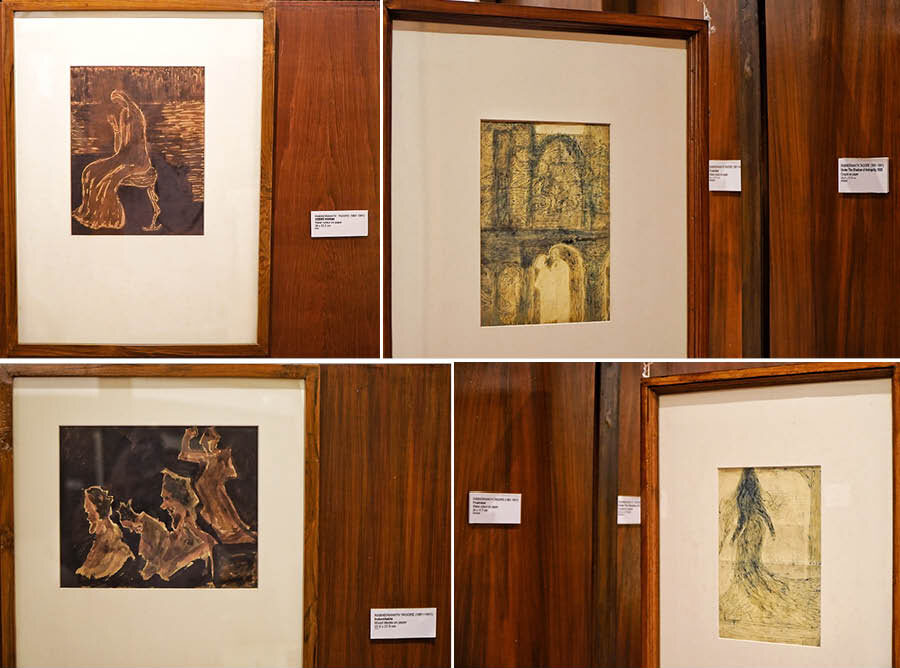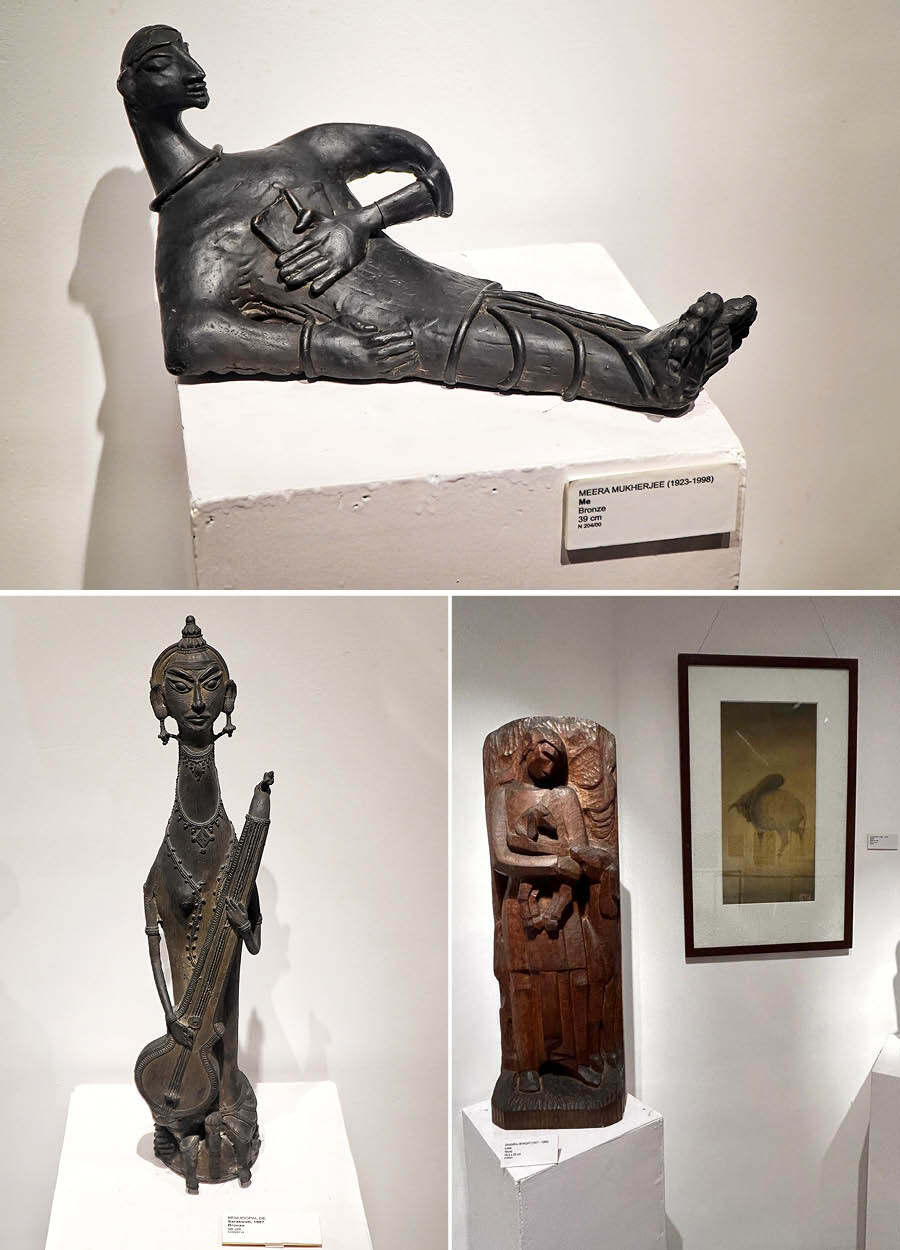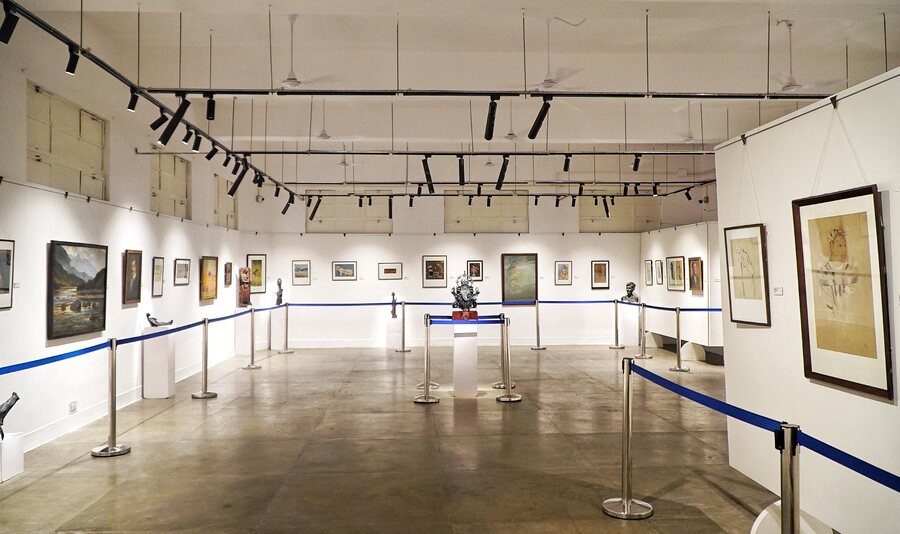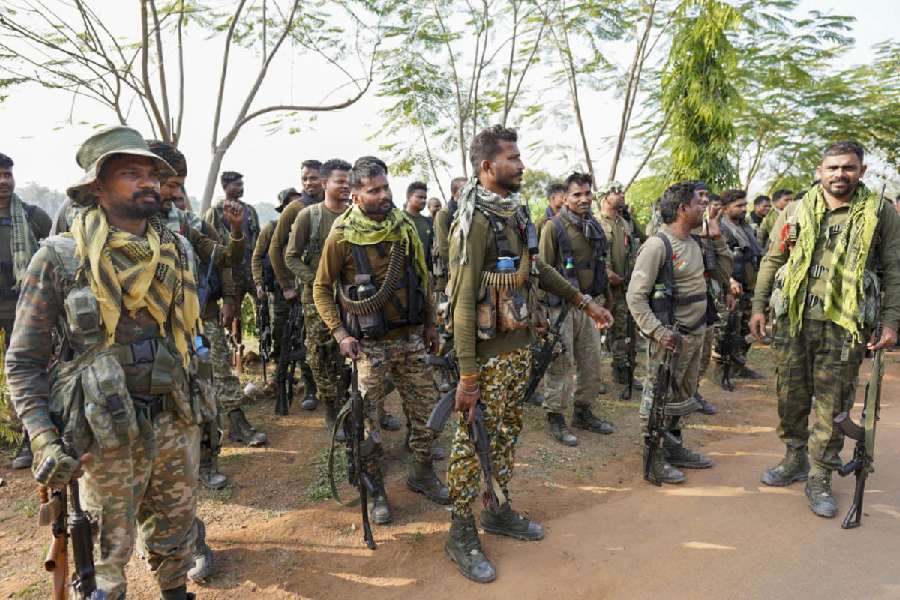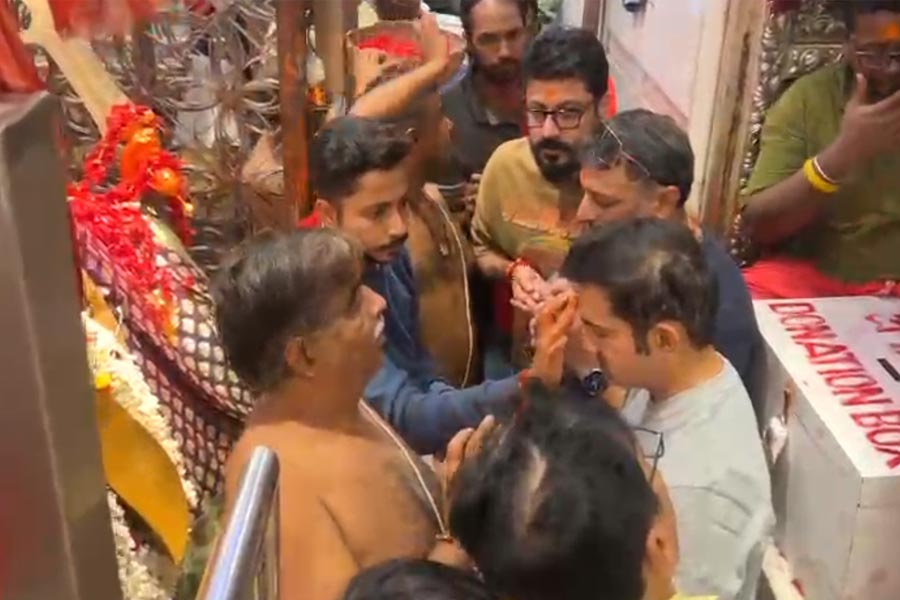
The Academy of Fine Arts reopened The Rabindra Galleries after a restoration hiatus of nine-and-a-half years. Artists Jogen Chowdhury and Samir Aich, curator of the museum at Academy of Fine Arts Baishali Ghosh, cultural entrepreneur Nandita Palchoudhuri, former Kolkata police commissioner Goutam Mohan Chakrabarti and co-chairperson of Techno India Group Manoshi Roychowdhury attended the inauguration titled ‘Phire Pawa’ on Baishe Srabon, Rabindranath Tagore’s 83rd death anniversary
Photographs by Soumyajit Dey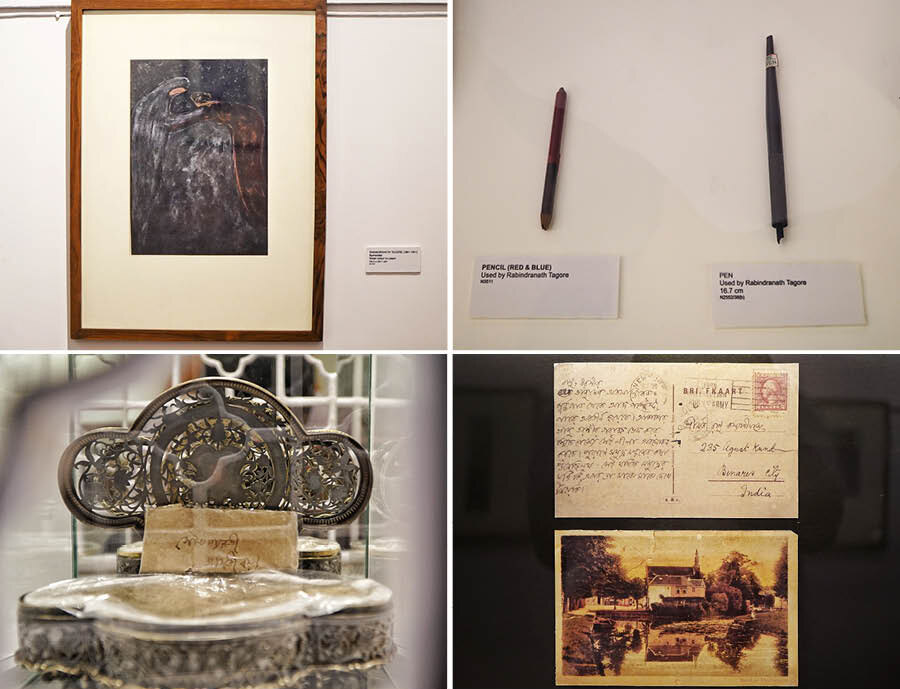
The newly opened gallery houses original paintings by Rabindranath Tagore, his personal belongings, letters written by the bard to Lady Ranu Mookerjee, postcards, and a strand of Tagore’s beard that was his gift to Lady Ranu with a personal note on her wedding. The strand of hair is kept in a silver box, restored and wrapped in the enclosure of German tissue paper. There are letters written in Bengali and in Chinese style from various parts of the world like Singapore and China to Lady Ranu by Tagore
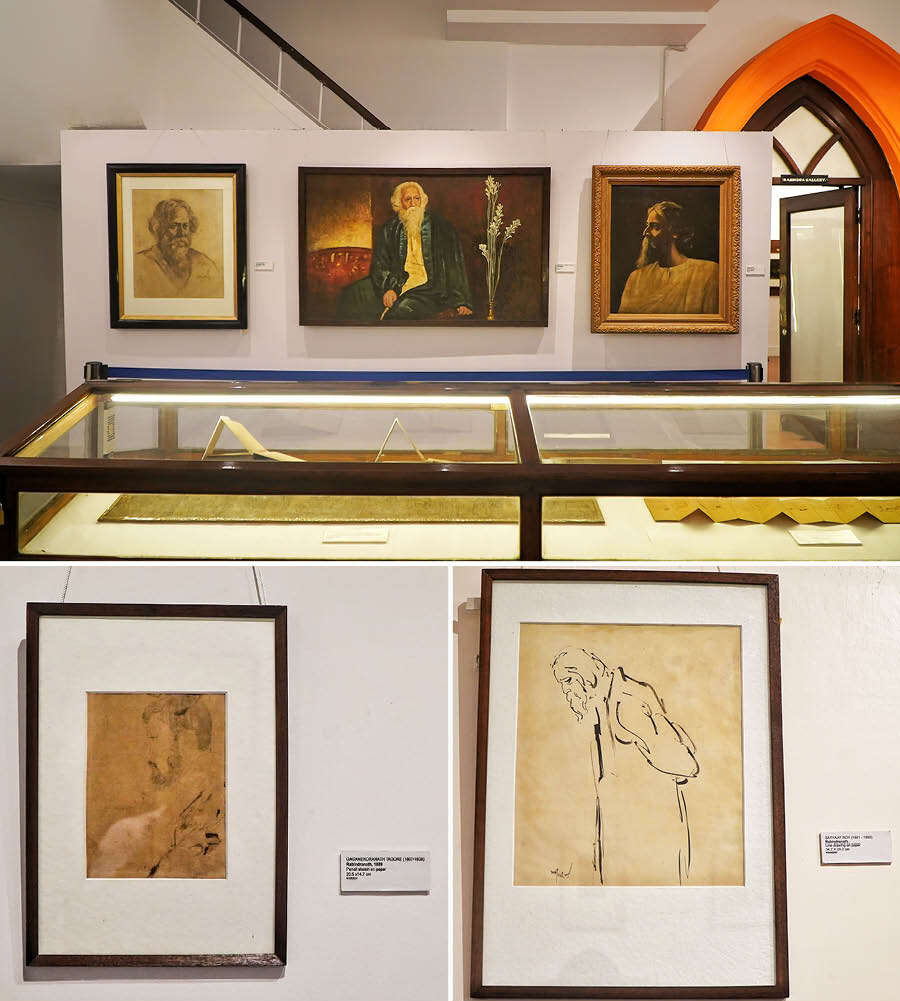
Thirty-eight original paintings by Rabindranath Tagore have been restored, reframed in mahogany frames under the project. The Rabindra Galleries is also home to portraits of Tagore by reputable artists Gaganendranath Tagore, Dipen Bose, Satyajit Ray among others. The gallery also showcases notebooks of the Nobel Laureate with manuscripts of Rabindrasangeet
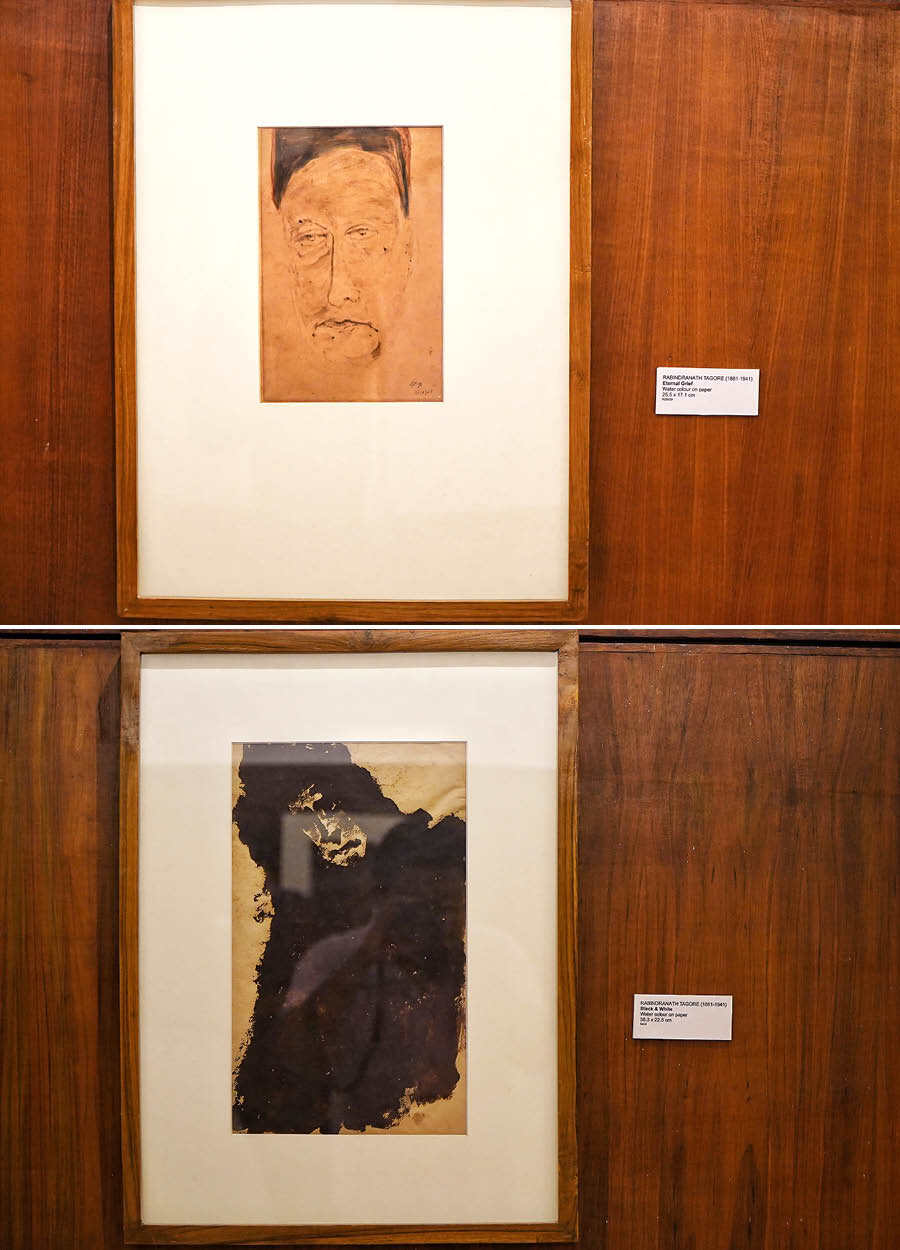
Among the other paintings by Tagore are ‘Eternal Grief’, ‘Black and White’, and landscapes of varied expressions. Both were painted with watercolour on paper. The paintings by Tagore, his letters and his personal belongings are in the first room that you enter on the first floor and in the room to the left beside a white marble sculpture of Lady Ranu Mookerjee
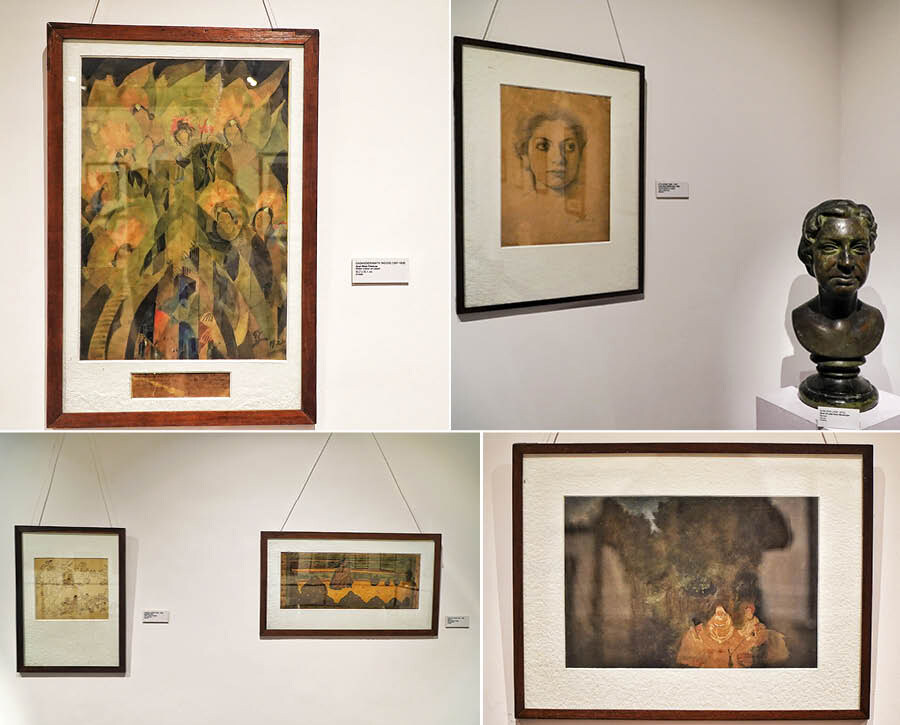
The third room of the gallery is dedicated to artworks by eminent names of contemporary art. Gaganendranath Tagore’s ‘Saat Bhai Champa’, Atul Bose’s ‘Lady Ranu Mookerjee’ portrait, Abanindranath Tagore’s ‘Musafir’ and Nandalal Bose’s ‘Basanta’ (L) are some of the paintings. The mediums are watercolour on paper for all four paintings by the three ‘pathikrits’ of Bengali art and culture

Andree Karpeles’s ‘Uttarayan’ — a different artistic representation of Santiniketan than today — is one of the paintings by foreign artists in the gallery. Among the Indian painters, Benode Behari Mukherjee’s ‘Lotus’, Jamini Roy’s self-portrait and Atul Bose’s self-portrait offer a diverse genre of art and artists
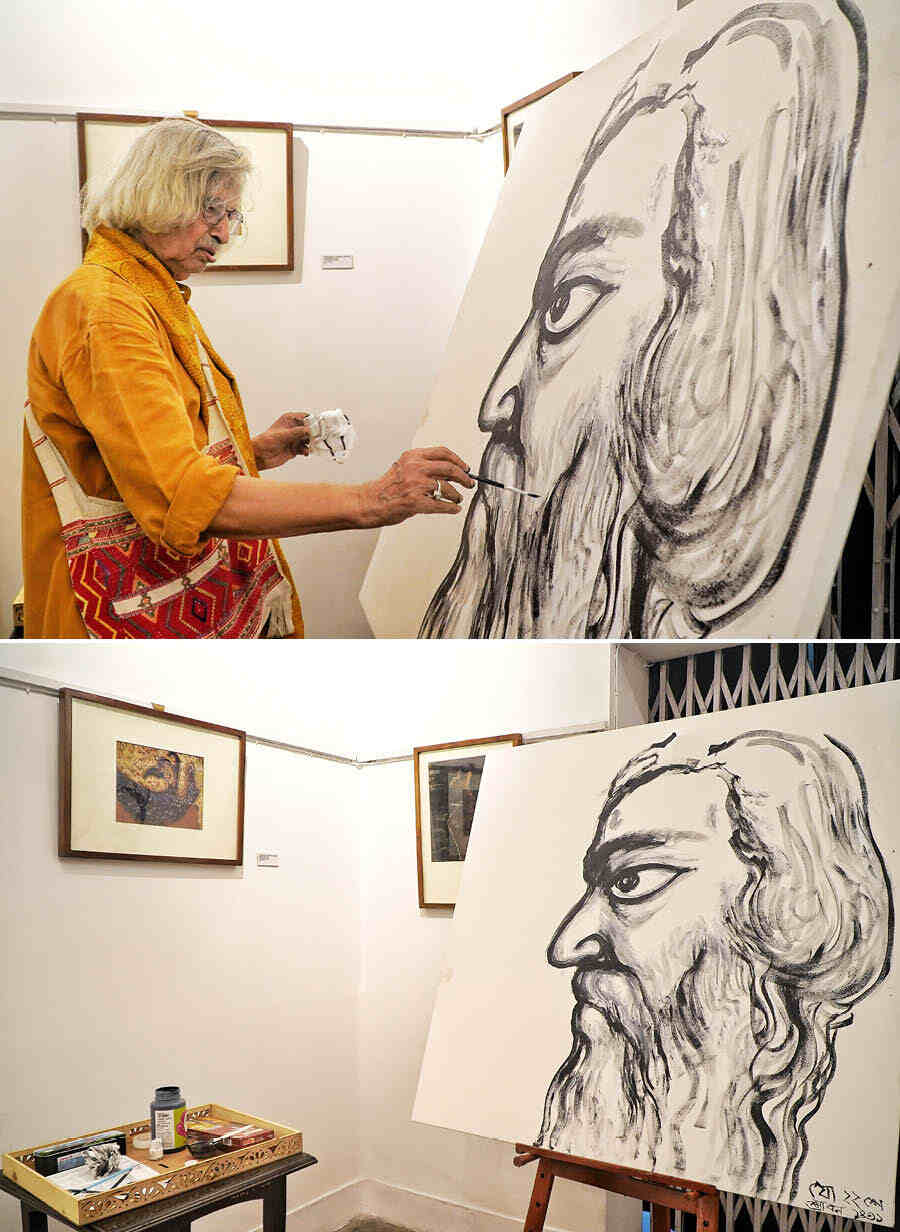
One of the highlights of the event was Jogen Chowdhury’s live painting of Rabindranath Tagore. The 85-year-old’s artistic representation of the bard along with students of Techno India singing Rabindrasangeet in the background weaved a magical moment for the audience. The octogenarian’s dedication towards art inspired everyone as he took no break to complete the painting — a tribute of an artist to the eternal artist
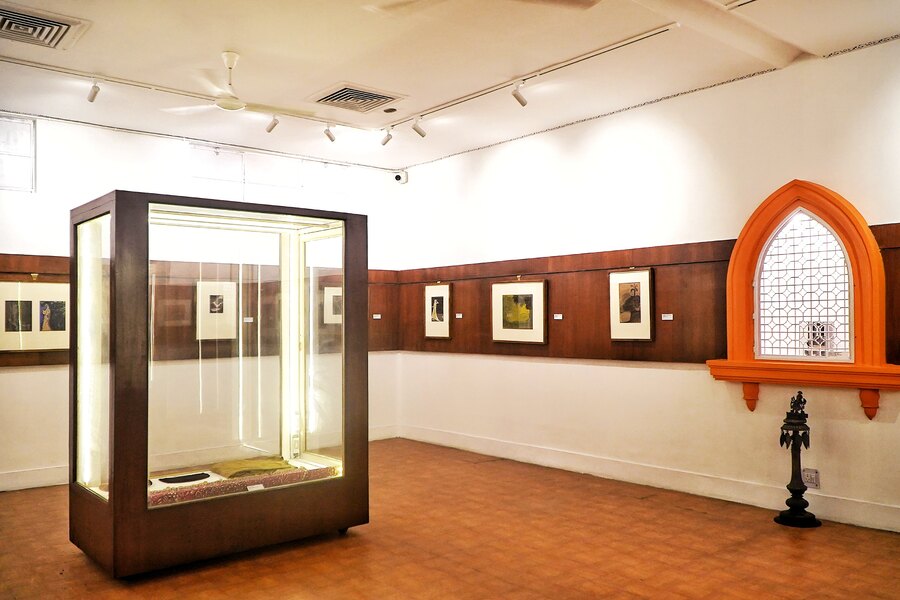
The Rabindra Galleries has a predecessor with a significant record in art restoration — The Gallery of Contemporary Art, which was inaugurated by Atul Bose in 1966. The Rabindra Galleries underwent restoration in 2016 by the National Research Laboratory for Conservation (NRLC) in Lucknow, which is funded by the ministry of culture. The curation was done under the supervision of Jogen Chowdhury
